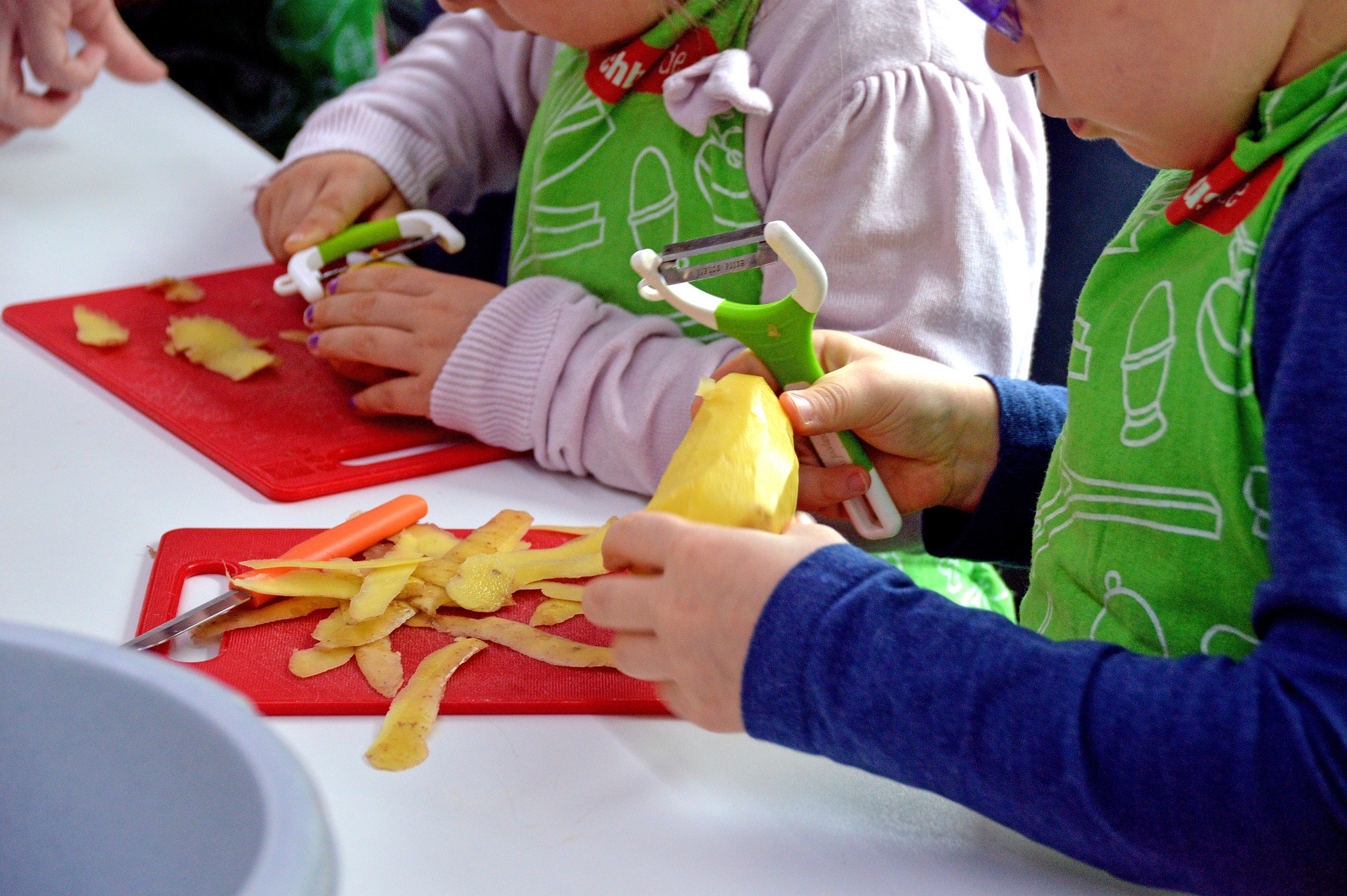Montessori Homeschool Curriculum
Homeschooling using a Montessori curriculum is awesome — that’s why we’re passionate about it! But with all the options out there, finding the right Montessori homeschool curriculum for your family can be difficult, not to mention time-consuming.
When choosing a Montessori homeschool curriculum or a mix of curriculums that fit your family, it’s important to remember that every family is different. What works for one might not for another and vice-versa. You know you’ve found the right fit for your family when the curriculum helps create a nurturing, stimulating environment at home that uses Montessori principles to help foster your child’s innate desire to learn.
With that in mind, here are five things to ask yourself when considering a Montessori homeschool curriculum:
1. Does it follow Montessori principles and pedagogy?
If you want to incorporate Montessori methods at home, it’s important to ensure the curriculum you choose follows the principles and methods of the Montessori method. The curriculum should follow the child, foster independence, and be straightforward enough for you to adapt it to your child’s developmental needs.
 An ideal Montessori homeschool curriculum will include guides on how to create a prepared environment at home, prepare yourself as the adult, and encourage self-directed, active learning. If there’s traditional teacher talk and a heavy workbook involved, it’s probably not Montessori.
An ideal Montessori homeschool curriculum will include guides on how to create a prepared environment at home, prepare yourself as the adult, and encourage self-directed, active learning. If there’s traditional teacher talk and a heavy workbook involved, it’s probably not Montessori.
Because the word “Montessori” isn’t trademarked, there are countless accessible Montessori resources, which is fantastic. However, it also means many curriculums are labeled as Montessori without following Montessori philosophy or principles.
2. Does it cover a variety of subjects and traditional classroom areas?
It’s OK to blend several different Montessori homeschool curriculums and resources to cover various subjects and development areas. That way, you can ensure it’s well-rounded. Trust your instinct when selecting the right activities and resources — you know more than you think! Having said that, a great Montessori curriculum should include a mix of activities from the following areas, which align with the areas of a traditional Montessori classroom:
Practical Life
Practical life activities include care for ourselves, care for our environment, care for others, and movement of everyday objects.
- Flower arranging
- Washing dishes
- Washing windows
- Brushing hair
- Setting the table
Sensorial Activities
Sensorial activities help kids process and organize intelligence and develop and refine the five senses.
- Organizing and building blocks of different sizes
- Learning about color gradients
- Identifying different fabrics
- Food tastings
- Learning about the weight of objects
Language Development
Activities that help kids nurture their natural disposition for language and communication.
- Introducing letter sounds through language miniatures
- Language materials like the moveable alphabet
- Cleaning a table from left to right (like the way we read and write)
- Sandpaper letters
Math
Montessori math activities are hands-on and prepare kids to learn important mathematical concepts.
- Construction and building
- Counting
- Manipulatives
- Tactile numbers (sandpaper numbers)
Cultural Studies
Cultural studies teach children about the world around them.
- Studying maps and geography
- Learning about plant life cycles
- Journeys to other cultures and learning about them
Artistic Expression
While not an official area of a Montessori classroom, artistic activities are often found in Montessori environments and give children an outlet to express themselves.
- Painting maps
- Models
- Sculptures
3. Are the materials high-quality?
 Montessori materials don’t have to be expensive. In fact, many homeschoolers DIY their Montessori materials. However, materials are a key element of the Montessori method. Find curriculums that provide a list of appropriate, long-lasting Montessori materials that you can easily find or a list of alternatives that can be easily bought or made.
Montessori materials don’t have to be expensive. In fact, many homeschoolers DIY their Montessori materials. However, materials are a key element of the Montessori method. Find curriculums that provide a list of appropriate, long-lasting Montessori materials that you can easily find or a list of alternatives that can be easily bought or made.
A good Montessori homeschool curriculum should clearly show you how the materials are used and their purpose and provide instructional videos. Search for a curriculum that provides further information on presenting materials, online resources, and extension activities using items you already have at home or can make easily!
It’s also important to pay attention to the quality of the material and who has designed it. Materials should be authentic Montessori materials or Montessori-aligned materials designed by a certified Montessori educator. It’s not always easy to tell, but you can usually find out by looking at reviews, asking other homeschoolers, or reaching out to the company.
4. Is the curriculum flexible and easy to individualize?
There isn’t going to be a one-size-fits-all Montessori curriculum because a Montessori education emphasizes individualized learning and flexibility. Montessori principles rely on respect for the child. Children can choose work from their prepared environment independently and are encouraged to foster an “I can do it by myself” attitude, helping them feel pride in their accomplishments when they master skills.
If the curriculum you choose is rigid and forced, your child won’t be able to progress at their own pace and explore their unique interests. Equally, if the curriculum is too vague, then it will be hard to master important skills. It’s all about balance and freedom within limits. Look for a homeschool curriculum that’s adaptable, flexible, and suits your family’s needs.
5. Does the curriculum offer any opportunities for support and community?
 Choosing to homeschool your kids isn’t easy and can often be lonely. Some days, it can be a real slog to keep the motivation and homeschool routine going. This makes it key to choose a curriculum that offers support and a sense of community! Many Montessori homeschool resources provide parents with access to a support network of other homeschoolers, such as links to online forums, discussion groups, or even local homeschool communities. In these groups, you should find support and advice from people who have “been there.” Community is an important pillar of the Montessori method; you get to decide how that looks for you and your family.
Choosing to homeschool your kids isn’t easy and can often be lonely. Some days, it can be a real slog to keep the motivation and homeschool routine going. This makes it key to choose a curriculum that offers support and a sense of community! Many Montessori homeschool resources provide parents with access to a support network of other homeschoolers, such as links to online forums, discussion groups, or even local homeschool communities. In these groups, you should find support and advice from people who have “been there.” Community is an important pillar of the Montessori method; you get to decide how that looks for you and your family.
Choosing the Right Montessori Homeschool Curriculum for Your Family
Invest in a Montessori curriculum that is easy to understand, implement, and adaptable enough for some changes along the way. You might not find the perfect Montessori homeschool curriculum right off the bat, and that’s OK. With a bit of trial, error and lots of adaption, you will eventually find a mix that works for you!





What curriculum do you recommend for an 18 month old? Thank you 🙏